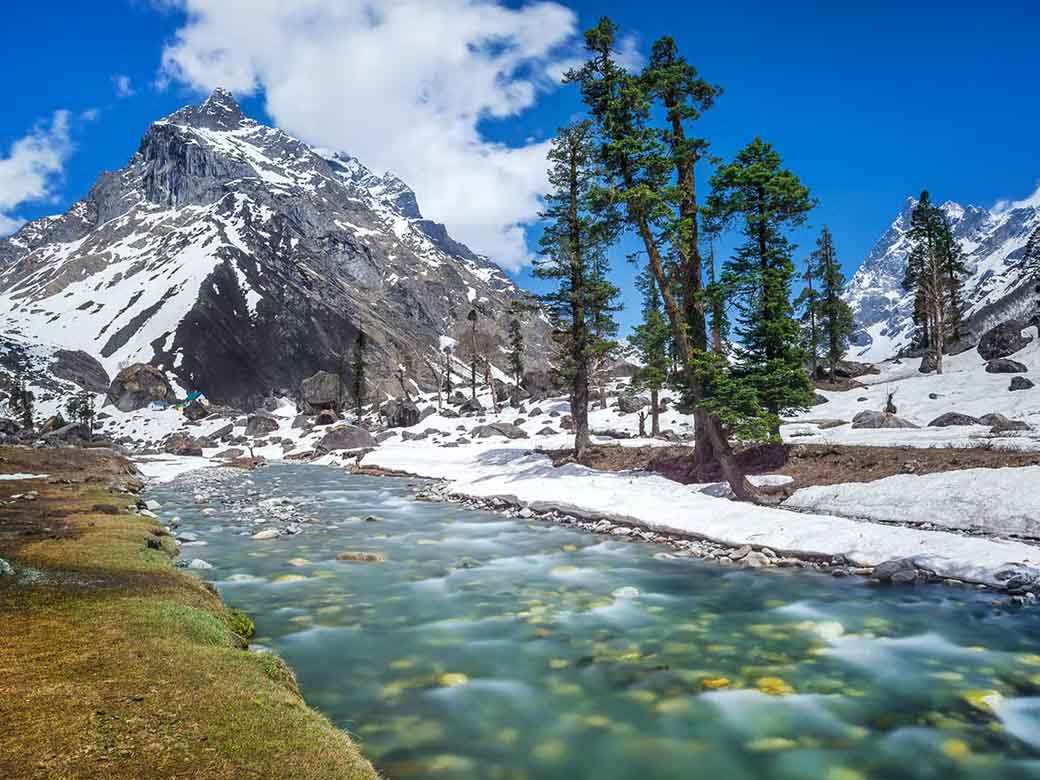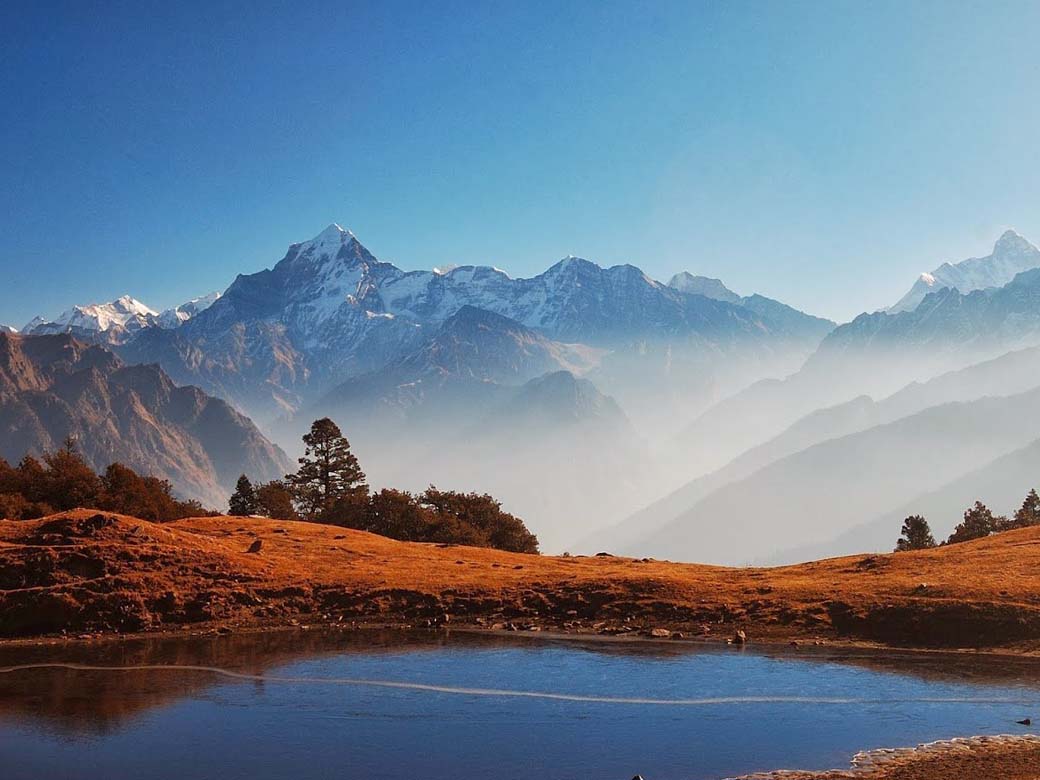Har Ki Dun is a cradle shaped valley, such valleys are formed when a small tributary glacier flows into a glacier of larger volume. The surrounding Swargarohini mountains will take your breath away. The pine, deodar and the beautiful Himalayan wildlife will be quite alluring.
The valley is about 3566m /11,700 feet, above mean sea level. You will find waterfalls suddenly coming out of nowhere, bugyals with rare flowers and butterflies, the majestic peak of Swargarohani and Kala Nag towering right in front of you. Jaunadhar glacier lies to the south east of Har Ki Dun. From October till March, snow will be in plenty.
‘Bhojpatra’, leaves of a tree used to write the Vedic manuscript was found by archaeologist. Several beautiful temples lie scattered on rugged mountain tops.
The trek to the valley starts from Taluka village and passes through Gangar,Osla and Seema. A walk through the ancient culture, which is still so cosily intact, is a wonderful experience. The Home stays bring to you the simple and carefree life that is led by the locals, it does make us contemplate, how we have complicated our lives in the cities.
It’s a five-day trek usually done in two stages. The first stage is from Taluka to Seema/Osla, which is 14 kilometres the second stage is from Seema/Osla to Simatra Thach,which is 8 kilometres’ third day is Simatra Thach to Har ki dun and back to Simatra Thach, total of 12km.The fourth day is Simatra Thach to Osla/seema /Panwani/Garat/Chilurgarh,total 9 km. The fifth day is Osla/Seema to Talia, about 14km and trek end, then Taluka to Sankari drive by jeep, total 12 km.
It’s a beautiful walk along a river valley.




Recent Comments